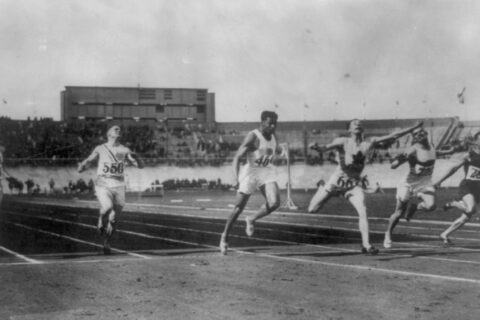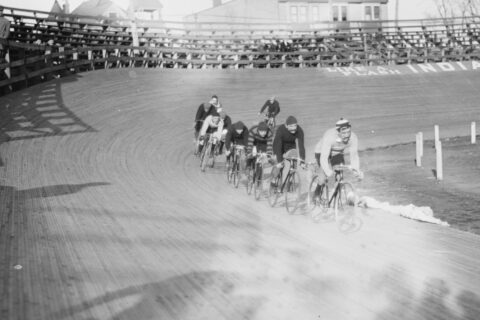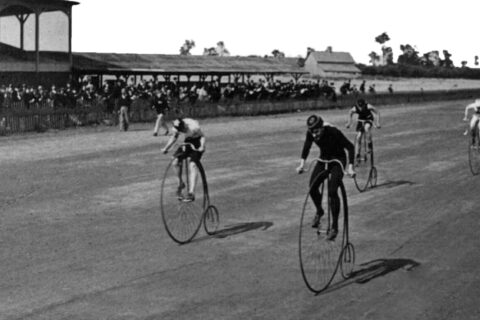In the second part of our eight-part video series, Dr. Stephen Seiler talks with daughter Siren about overcoming overtraining and injury. She describes how her training changed when she moved to a new training group, switching from a nine-day cycle to a seven-day one, increasing the number of hard workouts and taking fewer rest days. As Dr. Seiler says: “You were squeezing harder work into fewer days with less recovery—and that was not a good recipe.”
This ultimately led to Siren becoming overtrained and then getting a stress reaction in her femur. In the video she says: “I remember every morning when I got out of bed, my legs were feeling so heavy, like bricks. It was like I had to drag my legs with me when I was running.”
She took several weeks off from training and talks about how she physically and mentally reset: “I had to learn how to relax and how to really take a step back and let go of competition plans and all of these result-oriented goals and just really focus on getting healthier in my body.”
Video Transcript
Group Sessions Are Not for Everyone
Dr. Stephen Seiler 00:01
Sometimes group situations are great for high-intensity work and doing these types of sessions. But the problem is if you’re not the fastest, then you’re hanging on. They can kind of pull you a bit into the wrong intensity zone for the session. All of us need to be really aware of these conditions and if they’re favorable or not. You train well alone, because you don’t need the the battle with others to be able to pull yourself up into a tough workout, that’s never been a problem for you. It’s more about easily going too far, too hard. You training alone has generally been a good solution, just because then you only have to think about your own goals for that day and get pulled into a battle. It’s just a learning experience.
We have to also say that at that point, you still are not like this veteran runner, you’ve been a dancer, you’ve been a bunch of other stuff, you’re still transitioning, the running went pretty well, pretty quickly, in the one gear you kind of had. We’ll get back to that in a minute. But you still are not this athlete that’s been running for 10 years. You don’t have that big base, and maybe your weaknesses got exposed when you started trying to run fast. Is that reasonable?
Siren Seiler 01:38
Yeah, and also, I think part of it was I trained, or I got pushed, into a group of middle distance runners, like 800 meter and 1500 meter runners. A couple of girls that I trained together with, and, of course, we did have quite different strengths. It was good for me to get pushed like that. But I never felt that my qualities and my strengths were being really put to practice, because we didn’t have any of these very long runs or long intervals or progressive runs. I guess throughout that period I really lost confidence in myself and my training or way of training. I just felt that I wasn’t good enough. I wasn’t strong enough, and, of course, I probably had a lot of these voices from earlier with the eating disorder and thoughts that I’m not even able to eat enough to train this amount. But that would actually have been hard for whoever tried to train the way I did.
What ended up happening was that my sessions just got too hard. In terms of mechanical loading, my hard sessions got too hard, and sometimes they got into high intensity, like, too much Zone 5. Then I didn’t recover well in between, because my easy runs ended up being up in Zone 2, and then I wasn’t able to push as hard on the hard sessions. Everything kind of went like this, instead of this, and that was part of the problem. In the beginning it went very well, and then it slowly started feeling a lot tougher.
The Importance of Recovery and Rest During Training
Dr. Stephen Seiler 03:31
We talked about training studies, and any kind of interventions or variations will often give you a bit of a bump for a little while, just change, just changing things up feels like you’re stimulating some new things. I can recall an early phase in this where you say, “Yeah, it’s starting to work, my lactates are coming down.” But it was costing too much, and on the negative side, you know, this signal-versus-stress relationship was just out of whack. The stress was way high compared to what you could tolerate. You went from a nine-day cycle to seven, you went from two hard days to three. You don’t have to be a math expert to figure out that everything was going kind of the wrong direction. You were squeezing harder work into fewer days with less recovery—and that was not a good recipe.
Siren Seiler 04:32
I stopped having rest days. I wasn’t, I didn’t have time for rest days in that program. It was quite bad, it was a stupid way of training and it wasn’t just a program, it was me not handling it. It’s not just training, but, of course, when I lived alone and I wasn’t the best yet at fueling the way that I should. Not in terms of not eating enough, but just even the rhythm of not getting enough in right after a session. With all of that hard work, like if I didn’t get enough in the first 30 minutes, my recovery would be delayed and has consequences for the next session. It just kind of accumulates into worse and worse recovery.
Overtraining and Stress Reactions
Siren Seiler 05:31
Then I started getting even more tired from the training stress and then I slept worse. It kind of all went towards an overtraining state. I did actually get overtrained, like I had never been overtrained before, and it’s kind of a misused term. But I remember every morning when I got out of bed, my legs were feeling so heavy, like bricks. It was like I had to drag my legs with me when I was running. Then the stress reaction happened, and I realized, okay, I’m actually pretty cooked.
Dr. Stephen Seiler 06:18
Pretty messed up, yeah. Just for the listeners, a stress reaction, that means that they do the magnetic resonance imaging (MRI), they can see areas in the bone of your leg, the femur, as I recall.
Siren Seiler 06:33
Yeah, it was my femur, my left femur.
Dr. Stephen Seiler 06:35
That’s the biggest, essentially, I guess that’s the biggest…
Siren Seiler 06:39
Strongest bone in your body.
Dr. Stephen Seiler 06:40
The strongest bone in your body. You’ve been anorexic, you’ve been a dancer, all these things, and never had any problems, any issues.
Siren Seiler 06:49
I got a DEXA scan right after, and they showed that my my bone mass was completely fine. It wasn’t because of my eating disorder past. Which it’s easy to think, but my bone density had actually gone up a little bit.
Dr. Stephen Seiler 07:19
One of the fortunate things was all the dancing probably had given you quite a high bone density that you were able to rely on in a period that would be kind of problematic for bone density with the eating deficit or the energy deficit. But anyway, you had come through all that and then finally, starting to normalize energetically, and then you get this pretty darn serious bone issue that requires essentially, a full stop.
Siren Seiler 07:54
I didn’t really come to terms with it immediately, because I just didn’t believe it, I thought it was just impossible. I’ve been an anorexic, like severely low in energy for many years. That never happened to me. I just heard it was normal that sort of things happen. But I thought that, “Okay, now I’m actually much more healthy. Now I can just go and go hard.” That was probably the issue I thought I was stronger than I was, but it wasn’t because of the eating disorder past. It was just basically I did too much for any human being and didn’t recover well, and that for anyone will result in injury.
Recovering from a Stress Reaction
Dr. Stephen Seiler 08:52
You didn’t need a diagnosis or any kind of eating disorder to have this happen. Other athletes have had it happen and other athletes in the club you were in also were experiencing various kinds of bone issues. Full stop, no running for what, six weeks?
Siren Seiler 09:12
They say maybe four to six weeks, but it depends on where in the body, the injury is. Of course, the femur being a very large and strong bone that requires six to eight weeks. I was told, I didn’t know what to do. I thought okay, I can just start doing alternative training immediately. I’m just going to do the same total training load or even do higher hours because then I can use this situation to my advantage. I did that for a while. Then of course there’s this equation that has to go up because your body can’t repair an injury, especially an injured bone, if there isn’t a surplus of energy, it just won’t happen. That was part of it and I had to realize, okay, this is actually coming face to face with what I’ve been struggling with for many years. I had to really understand that I can’t continue pushing myself hard. I had to learn how to relax and how to really take a step back and let go of competition plans and all of these result-oriented goals and just really focus on getting healthier in my body. And also my mind, because it was very hard to not have that sort of identity or meaning in my daily life with training or chasing that interval session. It was a big transition and just getting used to it.



